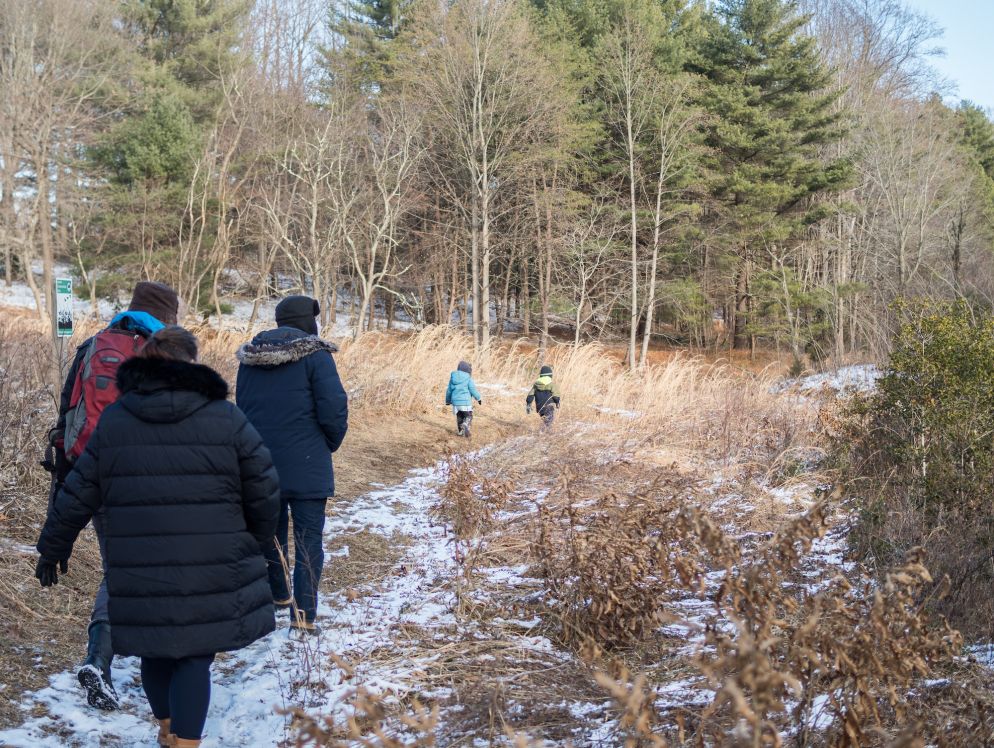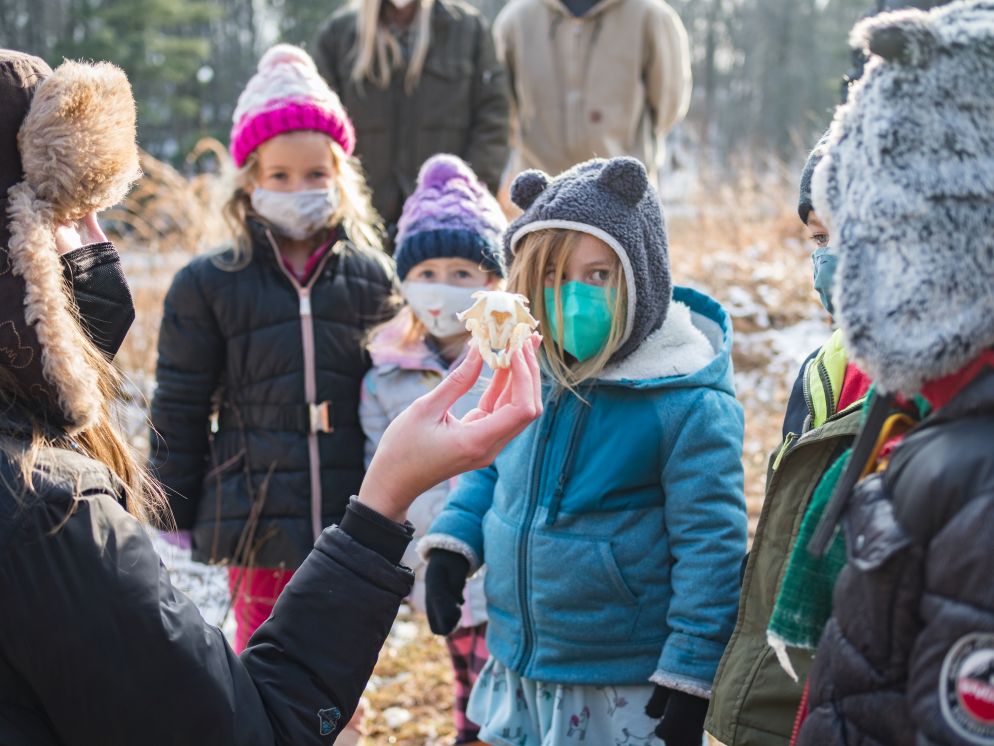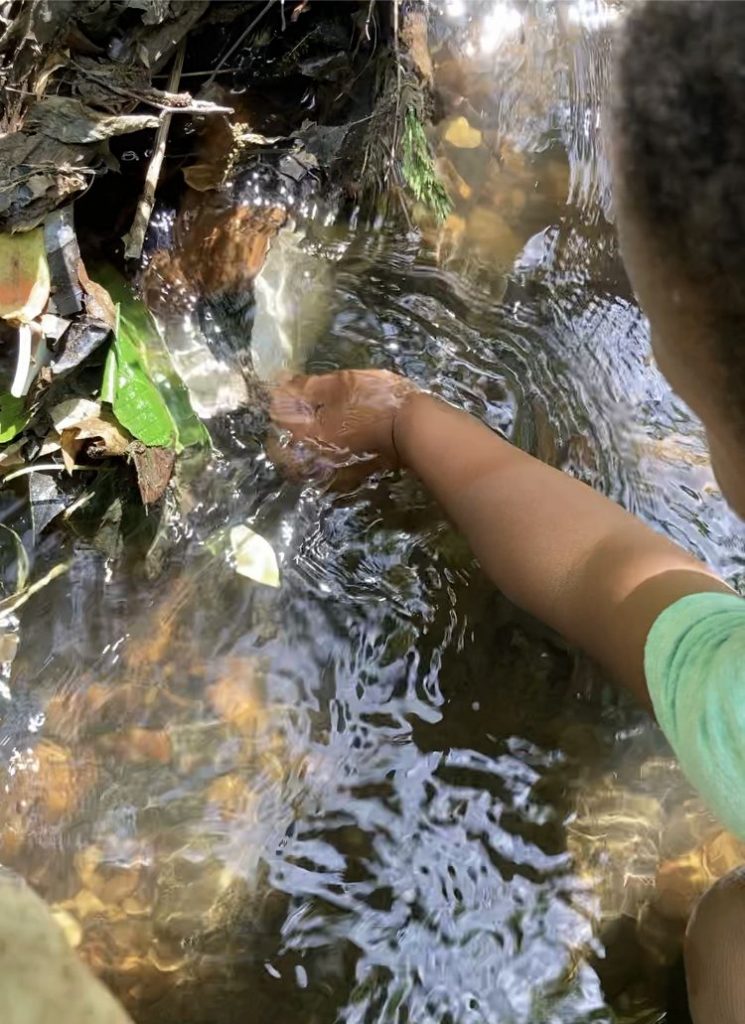
At Maydale Nature Classroom, children who visit campus will hear the sounds of the green frogs, tree frogs and bullfrogs and see the gnawed-on tree trunks of a beaver who made its lodge by the nearby stream.
A delight to the senses, being surrounded with nature is more than just fun and engaging; it’s an opportunity for education and growth.
“It helps [kids] understand the environment around them and make educated decisions on environmental issues,” says Glenn Rice, a park naturalist at the Montgomery County Parks Department. “It just allows them to connect to this local environment—the natural local environment.”
Maydale, in Colesville, Maryland, is part of the Montgomery Parks system in Montgomery County.
Constructed in 2019, it’s one of five facilities in the Montgomery Parks system that provide opportunities for learning outside the traditional four-walled school building. Maydale invites students, Boy and Girl Scouts and even homeschooled children for a day of learning.
Their day begins indoors with an overview on a topic like habitats and ends with a long hike outdoors, student and teacher interaction and the opportunity to look at various
habitats in real environments.
This is the kind of hands-on, real-world experience students react to with “interest and excitement,” Rice says.
What are the benefits to outdoor learning?
Beyond Maydale, enthusiastic learners are enjoying outdoor classrooms and learning experiences all over the DMV. The benefits of the unconventional model are plentiful.
Academic stimulation
First, there are educational benefits that come from simply being in an outdoor space.
“Being outside helps you lower your heart rate, increases your focus, and those things help children perform better academically,” said Rose Brusaferro, preschool director of the Nature Forward Nature Preschool in Chevy Chase, Maryland.
At Nature Forward, kids explore 40 acres of woods and greenery, observing how different plant and animal life interact. The groups also help identify birds as part of the Great Backyard Bird Count, a global program to find and report birds in order to better estimate their population and migration patterns.
Little minds begin to turn as children explore different spaces. Outdoor learning programs are designed using Montessori, Waldorf and Reggio Emilia pedagogies, which prioritize creative play and independence.
“The primary philosophy is to help children find the joy in learning by allowing them the freedom and the space to connect with the concepts and ideas that speak to them,” Brusaferro says.
Healthy Kids
Outdoor learning also has just as much benefit for the body as it does the mind.
“Just being outside in general and being out in nature has a lot of health benefits. It’s good exercise,” Rice says. “Contact with nature improves your physical and mental wellbeing, so it increases the ability of your immune system to fight off sickness,” adds Brusaferro.
Connection with nature
Being outside also connects kids with their surroundings in a positive way.
Consistent, uninterrupted interactions with the outdoors can lead to the creation of an “ecological identity,” which instills values of environmental protection.
Because this type of education increases awareness of the relationship between humans and the environment, any of the outdoor learning classrooms have an ecological component built into their programs.
“There’s also a philosophical hope that by being outside and connecting to nature every day, children will begin to form a bond with the natural world that will develop into environmental action,” Brusaferro says.

At Maydale Nature Classroom, the indoor space where children convene for the first part of their lessons is a repurposed administrative building, which, according to Rice, helped keep 7,000 pounds of waste from entering a landfill. The space is solar-powered and uses a rainwater harvesting system to collect water to use for the building’s plumbing.
The deepened connection between children and the environment can serve more than just eco-friendly causes. According to Mya Zavaleta, a pediatric nature-based occupational therapist and founder of Rooted Nature OT in Washington, D.C., which combines time in the outdoors with occupational therapy for children, spending time outside can prevent children from feeling afraid of their outdoor surroundings.
“When kids know what’s around them in nature… they’re gonna want to understand it more, become more curious and want to protect it, want to preserve it, become part of it,” Zavaleta says. “Whereas if they stay behind closed doors, they’re not even going to know. And sometimes, it even goes to this scary place.”
A wooded area becomes mysterious and intimidating. Nature becomes associated with animals that sting, bite or poison, rather than an environment that can help soothe.
Making the most of outdoor learning spaces
The good news is, everyone can go outside, making outdoor learning opportunities accessible. Experts offer some advice on how to make the most of time outside in a makeshift nature classroom.
According to Zavaleta, one of the beauties of outdoor learning is that the environment is always changing. This not only means that the lesson plans are always changing, but also that not even teachers or parents can know what exactly to expect, putting them on the same level as their students, neutralizing hierarchical relationships and bringing wonder to all parties.

“We are entering that space at the same time and we are both experiencing whatever nature offers us,” she says.
Using this philosophy, it’s important to embrace the changing of seasons. Each time you go outside, you’re likely to experience something new.
“It’s a different experience because the wind is going to perform differently; the sun is going to be shining in a different place; the leaves are going to look different,” Zavaleta says.
Children can even explore the outdoors in the winter, and experts encourage it.
“There is a benefit to being outside in the wintertime,” Brusaferro says. “There’s immune benefits to being exposed to cold weather, just as there’s benefits to being out in the summertime. So we always like to say that there’s no such thing as bad weather. You just have the right gear, and you can go out in any kind of conditions. And it is beneficial to experience the whole cyclical nature of the seasons.”
You don’t need to stray far from home to reap the benefits of a nature classroom.
Brusaferro insists that it’s just as valuable to observe nature right outside your front door.
“You can do it right off the sidewalk,” she says.
What are the trees and grasses outside of your house or on the way to school? What insects are munching on the plants?
“You can find so much life within a one-by-one square foot patch of grass,” she says.







